Are you looking for information about the Camino? Then you have come to the right place. Here you get an in-depth guide with everything you need to know about the fantastic and world-famous pilgrimage network Camino de Santiago, also known as the Camino.
Whether you are going on an 8 or 800 kilometer pilgrimage, get dressed for the journey here!
First of all – what is the Camino? More precisely, the Camino is a common term for the Camino de Santiago, a pilgrimage network of walking routes that all lead to the cathedral of Santiago de Compostela in northern Spain. Most people call the French route the Camino, and it is approximately 800 kilometers long. In Danish, it is also called the Way of St. James.
Camino means to walk, but it can also mean road. When you say Buen Camino to other hikers, it means that they should have a nice trip both physically and spiritually.
At Caminoking.dk we write about the Camino and all the things that belong to the story. Are you going to walk the Camino, or do you simply want to know more about the fantastic walking routes? Then we explain the most overall very sharply in this article. Read along!
indholdsfortegnelse
ToggleCompeting Guide to walking the Camino in Spain
There can be many good reasons why you want to walk the Camino, and no two Camino journeys are the same. Some like to be well prepared, and others like to throw themselves into it and solve the challenges that arise along the way. Here at the editorial office, we have hiked several Caminos in Spain, and in this article share general knowledge that many people lack answers to when they go hiking on unknown paths.
You can find a lot of information about routes, lengths, maps, equipment and general info, which might be an idea to be prepared for.
Are you in doubt whether to walk the Camino alone or with others? So we have written a reflective article on this question. Read it here → Can you walk the Camino alone? My depictions (Camino Queen)
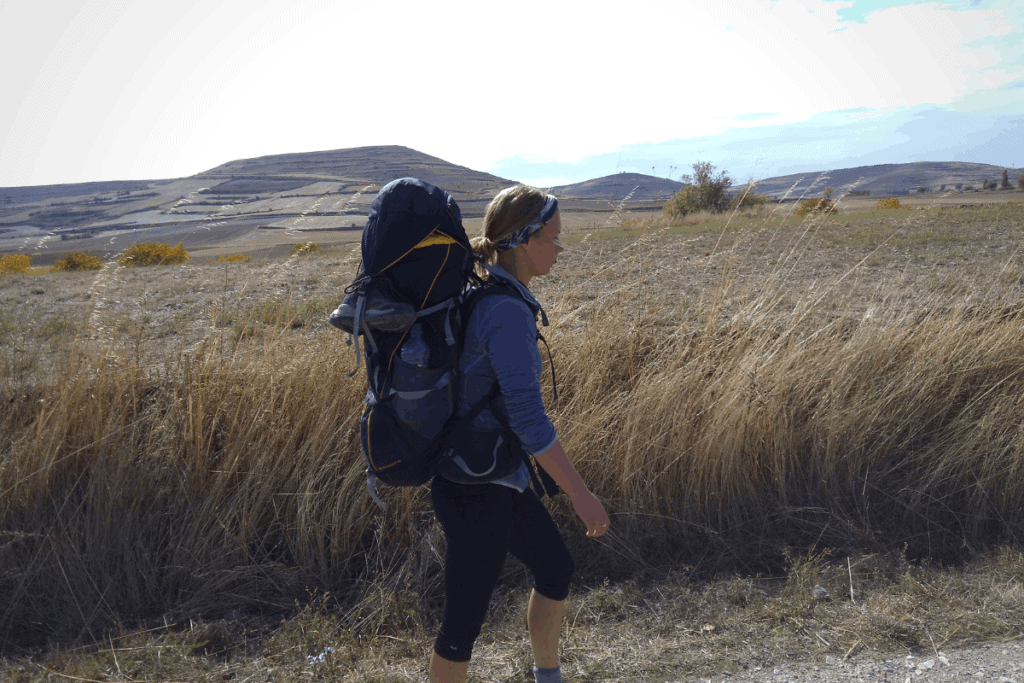
The Camino in 2022
Right now there are a lot of people asking what it is like to walk the Camino post corona and the covid-19 situation. You can follow a lot of exciting Facebook groups where they write reports about what it is like to walk the Camino in 2021/2022, when the route was both closed and reopened for pilgrims.
We haven't had the pleasure of revisiting the fantastic route in Spain yet, but we are following the events closely while we test the Danish hiking routes. We try to keep everyone updated here on the blog about the Camino, but you have to follow up on the changing world situation yourself before your trip. In the meantime, you can read our in-depth guide on the Camino or…
You can track how many pilgrims officially reach the finish line each day on this website: https://oficinadelperegrino.com/
What is the Camino? The Way of St. James
There are several interpretations of what size the Camino is. The Camino has many names and it stretches over almost countless routes. In principle, all the routes should lead to the cathedral of Santiago de Compostela, the capital of the autonomous community of Galicia, located in northern Spain. However, there are also Caminos where this is not the case.
In Danish, the Camino is most often called the Camino, but you can also easily come across people who refer to the route as the Way of St. James, Camino de Santiago, or The French Route. The French Route takes place primarily in Spain, but starts in Saint-Jean-Pied-de-Port (SJPDP), which is a small municipality in southwestern France, located by the Pyrenees.
Would you like to know more about the history of the Way of St. James? Then we wrote an article about Sankt Jakob and the 800 kilometer long route, which you can read right here → That is why the Camino is also called the Way of St. James (History)
In English, the Camino is also called El Camino or The Way of St. James, which is the same as the Way of St. James.
How long is the Camino? Map of the Camino
It is usually said that the Camino is about 800 kilometers long. As we have previously emphasized, the Camino is a whole network of different routes, and there is therefore no definitive answer to this question. Most people are looking for an answer to how long the French Route is, and we often write 780 km there.
Read more about the length of the Camino here → Camino length
Here you can see a map of the most famous Camino route of them all
Here are six of the second best known Camino routes on the Iberian Peninsula:
- Portuguese Way (≈ 610 km)
- Northern Way (≈ 825 km)
- English Way (≈ 120 km or 75 km)
- Primitive Way (≈ 370 km)
- Via de la Plata (≈ 800 km)
- Camino Finisterre-Muxía (≈ 87 km + 29 km)
The routes are sorted by popularity in relation to how many choose the specific route, and the followers receive a pilgrim's certificate showing that they have walked a minimum of 100 kilometers on the Camino de Santiago. This proof is also called La Compostela. Read more about the network and the many routes here → the Camino de Santiago
How long does it take to walk the Camino?
It is very individual how long it takes to walk the Camino. It depends both on pace and which route you choose. In 2019, 55% of all pilgrims who received a pilgrimage certificate at the Cathedral of Compostela had chosen to walk French Way. If you choose to hike all approximately 800 kilometers, it will take between 26-31 days if you follow most instructions and stages. We did the route in 26 days, but if you follow the official stages, it takes 31 days.
Here you can get an overview of the official stages on the French Camino
- Saint-Jean-Pied-de-Port – Roncesvalles (25,7 km – 9 albergues)
- Roncesvalles – Zubiri (21,5 km – 7 albergues)
- Zubiri – Pamplona (20,4 km – 17 albergues)
- Pamplona – Puente la Reina (24 km – 14 albergues)
- Puente la Reina/Gares – Estella/Lizarra (22 km – 9 albergues)
- Estella/Lizarra – Torres del Río (29 km – 8 albergues)
- Torres del Río – Logroño (20 km – 10 albergues)
- Logroño – Nájera (29,6 km – 14 albergues)
- Nájera – Santo Domingo de la Calzada (21 km – 5 albergues)
- Sto Domingo de la Calzada – Belorado (22,7 km – 11 albergues)
- Belorado – Agés (27,4 km – 10 albergues)
- Agés – Burgos (23 km – 9 albergues)
- Burgos – Hontanas (31.1 km – 11 albergues)
- Hontanas – Boadilla del Camino (28,5 km – 15 albergues)
- Boadilla del Camino – Carrión de los Condes (24,6 km – 12 albergues)
- Carrión de los Condes – Terradillos de los Templarios (26,6 km – 6 albergues)
- Terradillos de los Templarios – El Burgo Ranero (30,6 km – 13 albergues)
- El Burgo Ranero – León (37,1 km – 18 albergues)
- León – San Martín del Camino (25,9 km – 9 albergues)
- San Martín del Camino – Astorga (24,2 km – 10 albergues)
- Astorga – Foncebadón (25,9 km – 17 albergues)
- Foncebadón – Ponferrada (27,3 km – 10 albergues)
- Ponferrada – Villafranca del Bierzo (24,1 km – 12 albergues)
- Villafranca del Bierzo – O Cebreiro (28,4 km – 16 albergues)
- O Cebreiro – Triacastela (21,1 km – 9 albergues)
- Triacastela – Sarria (18,3 km – 27 albergues)
- Sarria – Portomarín (22,4 km – 25 albergues)
- Portomarín – Palas de Rei (25 km – 19 albergues)
- Palas de Rei – Arzúa (28,8 km – 27 albergues)
- Arzúa – O Pedrouzo (19,1 km – 13 albergues)
- O Pedrouzo – Santiago de Compostela (20 km – 15 albergues)
Albergues is the word for the hostels and pilgrim houses where you can stay at favorable prices when you are out on your journey.
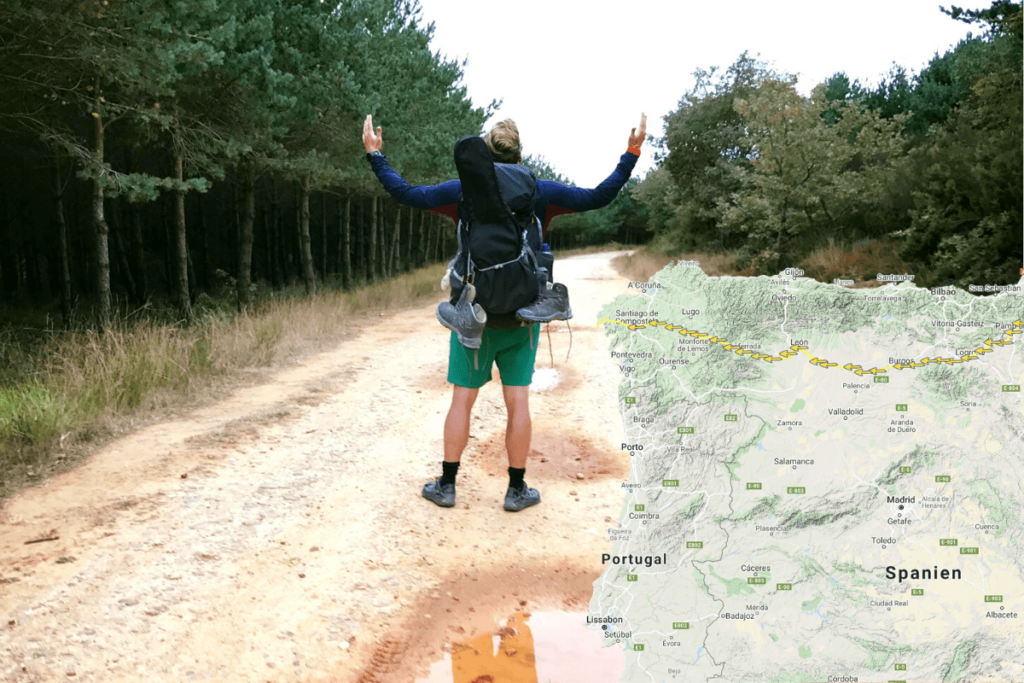
The 8 most popular routes on the Camino
Many people think that the Camino is just a route. We also have a handful of good ones Camino routes in Denmark. Popular routes exist throughout Europe and are also starting to emerge elsewhere in the world. In the table below you can see the most popular routes on the Iberian Peninsula.
| Ruth | Number of Pilgrims | Per cent |
| French Way | 189937 | 54,65% |
| Portuguese Way | 72357 | 20,82% |
| Camino Portugues (Coastal Route) | 22292 | 6,41% |
| Northern Way | 19019 | 5,47% |
| English Way | 15780 | 4,54% |
| Camino Primotivo | 15715 | 4,52% |
| Silver Way | 9201 | 2,65% |
| Muxia-Finisterre | 1548 | 0,45% |

The table shows how many pilgrims were issued the pilgrimage certificate The Compostela in 2019. It is a certificate you can get at the cathedral in Santiago de Compostela when you have walked a minimum of 100 kilometers on the Camino and collected stamps in your pilgrim passport. The Pilgrim Pass is also called The Credential. This pilgrim's pass also ensures that you can stay cheaply at the various hostels and hostels on the route + eat a three-course pilgrim's menu for 10 euros at many eateries.
How much does it cost to walk the Camino? Our estimated price for walking the Camino
Now we had a little insight into what it actually costs to walk the Camino. Of course, it depends on so much. You can make the trip incredibly cheap if you eat at local places in Spain and spend the night in places from 5-10 euros per night. We hitchhiked to the Camino the first time we had to leave, which also made the transport to the starting point really cheap. Some choose to have their luggage transported and others choose to spend the night in expensive hotels. You can get it all, and therefore it is also difficult to give an exact price.
There are an incredible number of water stations on the route, and we also drank quite normal water from taps. Therefore, you can also find water for free if you are willing to use the water sources that are available. We have written an article about what food and drink costs on the Camino. Read it here → How much does food cost on the Camino? See my affordable Camino GUIDE
Personally, we think walking the Camino is incredibly cheap compared to other holiday types. What you can quickly end up spending too much money on is either transport or equipment. You don't need any luxury to walk the Camino, as you can find most things when you're down there. Would you like something delicious? outdoor equipment from Danish webshops? Then you can find some of the best brands here on the website, where we compare prices if several stores have the same items.
from Danish webshops? Then you can find some of the best brands here on the website, where we compare prices if several stores have the same items.
See some of our most popular categories when it comes to gear on the Camino here:
Where does the Camino start? Here's how to get there
The Camino starts in Saint-Jean-Pied-de-Port (often abbreviated SJPDP). If you arrive here, you will have no doubts about where to go. You can either ask some of the many other pilgrims, or you can simply start following the famous Camino symbol or yellow arrows.
How do you get to the starting point of the Camino? Most people fly to Biarritz and then take public transport to Bayonne. After this, it will be easy to get on to Saint-Jean-Pied-de-Port, where you can take a nice and pleasant train ride.
There are many ways to get to the start of the Camino, and as I said, there are many different starting points. One thing you learn when you hike the long route is that patience is a virtue and you can hike most of your problems away. That is why I am also sure that you will probably find the starting place if you give it a little shot. It's all usually simple when you've gone all the way to the South of France already.
When you arrive at SJPDP, there are also a lot of maps so you can find help at a pilgrims office. Here, for example, you can also find a pilgrim's passport and the famous seashell, which most pilgrims choose to carry on their bag when they are out on the route.
How do you spend the night on the Camino? Tent, hostel, hotel or something completely different?
Once you've started hiking, it's rarely difficult to find accommodation. The biggest problem can be if you are hiking in high season and it all gets booked. We have been exposed to this a few times, where we always find a place anyway by, for example, getting some extra mattresses to sleep on the floor with, or by moving on to the next place.
There are plenty of different options for staying the night on the Camino. The most common is in hostels, which in Spanish are called albergues. This is the same as a hostel. You can typically spend the night here for between €5-10 per night, depending on your requirements. There are also places called donativo. Here you choose how much you want to pay for their hospitality.
There is also ample opportunity to sleep in hotels. There are also many people who choose to do this, but the total price will be completely different if you choose to go the whole route. That is why many choose the last 100 kilometers and spend the night in hotels on the last stretch. You can call it a Luxury Camino.
You don't see many people sleeping in tents on the Camino, as there are already so many accommodation options. At the same time, there are also many places where you are not allowed to pitch a tent. We have brought hammocks where we have found a quiet place on the route. This can easily be done if you are not uneasy about spending the night outside in Spain.
We haven't spotted any shelters on the route yet, but some have written and asked us, and we're still looking into this possibility, but it's very atypical, if you can at all.
You never know which party you'll miss
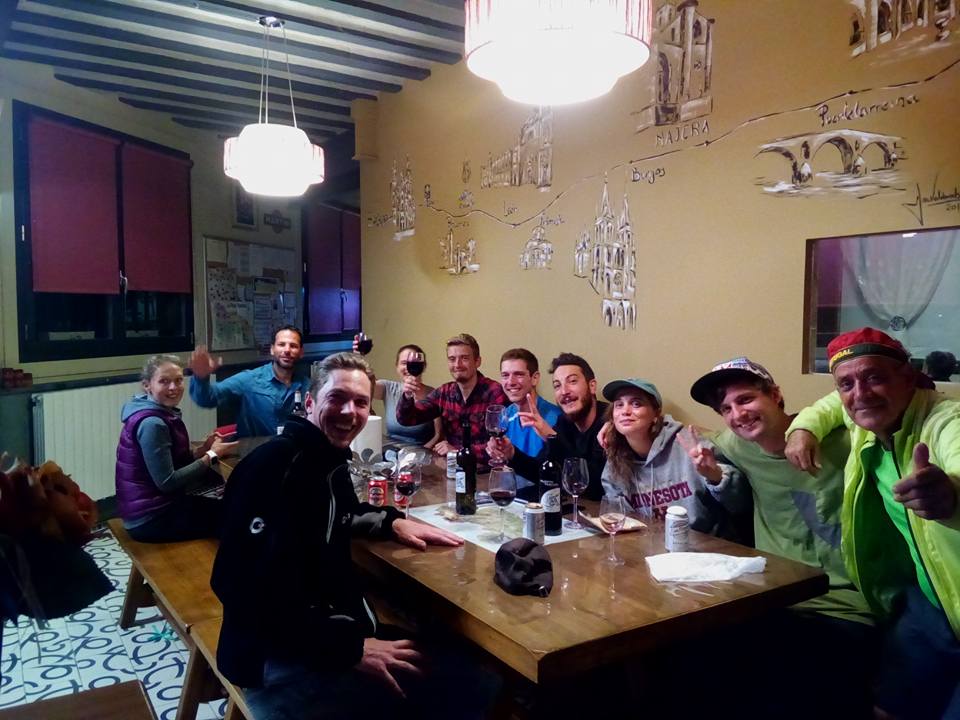
The wildest parties and gatherings can occur at the various hostels. In some places you will find boring bunk beds where people go to bed early, but if you end up in the right places, magic can happen. We have ended up in countless parties where we haven't had many hours of sleep, as the whole hostel has decided to party at the same time. Of course you have to respect everyone, but there is often alcohol, a good atmosphere and communal dining in most places if you feel like it. Just as the entrepreneur Jesper Buch always does, we also recommend the Camino to most people who need a revelation in their everyday life.
Where does the Camino end?
As the old saying goes, the journey is the destination. Still, the official part of the Camino ends in Santiago de Compostela. It is at the cathedral that all the symbols point towards, and it is to the cathedral that the distance is measured to, and this is where you can get your pilgrim certificate.
However, many do not feel like ending their Camino here. In the picture below, it looks like we have reached the finish line, but most of us and other pilgrims choose to continue the journey to Finisterra, which is also called the end of the world.
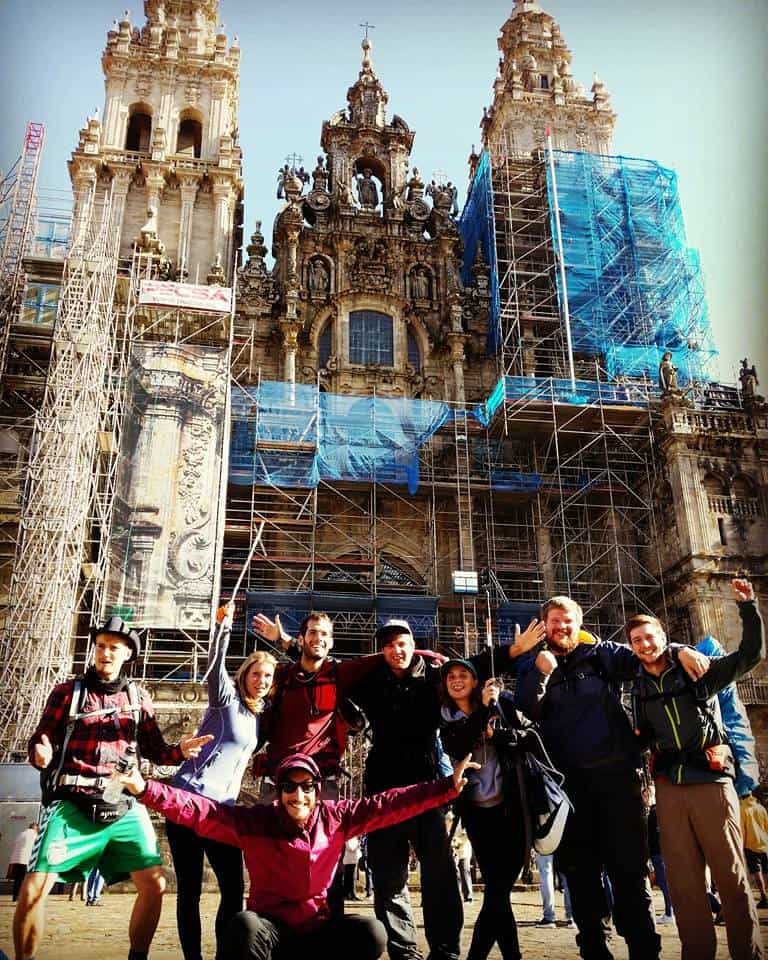
What is the difference between the Camino de Santiago and Santiago de Compostela?
The reason we include this heading is that we ourselves were very confused by the many terms the first time we walked the Camino. We had had no preparation at all, and therefore we had difficulty finding our way around the many names. When you say the Camino de Santiago, it refers to the entire large pilgrimage network of which the Camino is a part. When you say Santiago de Compostela, you are talking about the capital of Galicia, i.e. the city where most people end their Camino.
You can quickly fall short in another country if you don't know the language and culture. In fact, the culture manages to change a lot on the 800 kilometer hiking route. We have collected some Spanish phraseology if you get into trouble at the café. It's always good manners if you at least try to fire off a few Spanish words. Here you will get some quick help
| Danish | Spansk |
| Sandwich with ham and cheese |
Bocadillo cn jamon y queso
|
| Coffee with milk | coffee con leche |
| Toasted bread with butter and jam |
Tostada con mantequilla y mermelada
|
| Freshly squeezed orange juice |
Orange juice
|
| Can I ask for a beer |
una cerveza Por favor
|
| … one more beer please |
una cerveza mas Por favor
|
| Red wine / white wine |
Vino tinto / vino blanco
|
When is the best time to walk the Camino?
It depends on what you are for. We prefer to avoid the high season if we can. This is mainly due to two reasons:
- The Camino can be incredibly overcrowded in the high season and therefore the hostels can be overcrowded. People almost fight each other to get there early to find a good place to stay and this can spoil much of the charm and tranquility of walking the long and amazing walking route.
- We love the heat, but to hike with backpack in +30° degree heat can quickly become tiring, especially if it is in bright sun. Here we also prefer that it is outside the high season.
There is a huge diversity in the people who walk the Camino. It's everything from age, nationality, and preference for the route. You can meet many amazing people, but some are more social than others. That's why it's a really good idea to decide whether you like a lot of people or not. So consider the weather and the season carefully before booking your first trip to the Camino.
Bonus info: Remember that there are many Caminos. Therefore, you can check the table further up in relation to how many choose the different routes. In addition, you can research more about the routes on our website. It may be that there is an option that suits you better than the French route.
What equipment does walking the Camino require?
Walking the Camino does not require much equipment. This is a question that a lot of people are looking for an answer to before they set off for the first time. You must always consider your needs carefully, because it depends on which Camino you choose, how far you have to walk, as well as how you intend to spend the night and travel to and from the route.
You can manage incredibly minimalistic through the Camino. Some of the most common equipment to acquire is the following:
- Hiking boots and hiking shoes
- Backpack
- Sleeping bag
There is of course a lot of stuff to fill the backpack with. We have written an article about all the equipment you need to have ready for the Camino. Read it here: Packing list for the Camino
If you read the list above, you will have no doubt about what you should and should not bring on the Camino.

Many take far too much equipment with them and end up with a far too heavy rucksack on the trip. We've seen many funny cases of what people choose to bring, and we've also experienced overpacking ourselves. Therefore, your trip will often be more pleasant if you are well prepared, but is it really necessary to train up? That's what we offer.
Do you have to train for a Camino?
Of course, it is also very individual whether you need to train up before you set out to walk a Camino. Something that surprises many is how hard it is to hike more than 20 kilometers a day with a backpack and in hilly terrain.
The Camino can be painful and a physical challenge for most. It is therefore important that you walk the route at your own pace and not let yourself be pressured by the others on the route. Then you quickly end up with terrible blisters, a knee injury, or an exhaustion that doesn't feel like what we otherwise describe as a magical trip.
We recommend that you train from home, so that you have tried going on long walks in the hiking boots or hiking shoes you choose to bring, and have tried carrying a backpack with weight on these long walks.
We didn't train ourselves before our first trip on the Camino Francés, and if you start in Saint Jean Pied de Port, you start by hiking over the Pyrenees mountain range, which is the hardest route of the whole trip.
You must be ready for the terrain on the Camino
Quite a few people often ask curiously if you get to walk on asphalt on the Camino. When you hike around 800 kilometers across a country, you automatically come across a lot of different terrain. Spain has a very hilly terrain and the weather can also be very changeable. You will walk on boring asphalt, dry areas that almost feel like a desert, big breathtaking mountains, lush forests, gravel paths, and much more. The route is generally fantastic and you pass through many cultural towns, which of course have a lot of pilgrim-friendly activities ready for exhausted walkers.
How to find your way on the Camino (Camino Symbols)
There are a surprising number of people who get lost on the Camino. We don't think there are any routes better signposted than the Camino, but that's often because people are lost in their own thoughts. It is really easy to find your way on the Camino, and those who stray often easily find their way back on track. However, it can be tiring to take a detour of 3 kilometers if you are already very exhausted.
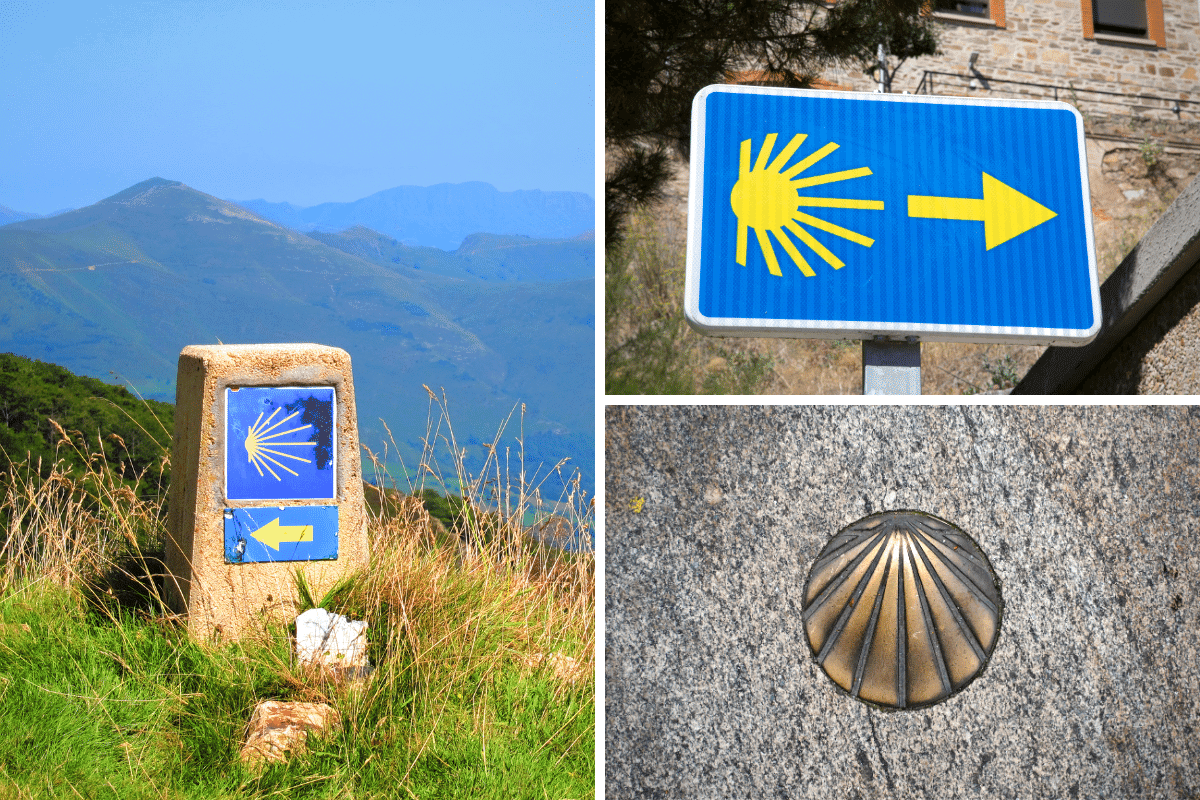
In the picture above you can see examples of how to find your way on the Camino. The route is marked with seashells and yellow arrows all the way, and these are regularly maintained. You often find yourself standing and scouting for a yellow arrow, and then you either stand on top of an arrow or seashell.
So many arrows appear on the route that some pilgrims start dreaming about them at night. So it shouldn't be an obstacle for you to go if you are afraid of getting lost. However, there are other things you should consider instead before you leave, and we have found some good advice you can consider before you set off on what could be the trip of a lifetime.
Consider these 7 things before you set off on the Camino (Good advice)
You can quickly come up with a lot of good advice for others when they go hiking. Planning, budgets, equipment, and other physical and material things are easy to advise on. The Camino is a highly civilized pilgrimage network that can often give you everything your heart desires. Therefore, the question is often whether you have the necessary mental attitude if you want to take a whole month out of your calendar to hike.
When we write as long an article about the Camino as we have, and as much info about it as you can find on this website, it is because there is an incredible amount to say about the Camino itself. It is full of both advantages and disadvantages, and of course we are uncontrollably crazy about the pilgrim network. However, not everyone has the same romantic image of the Camino as we do. That's why we recommend considering seven things below before setting off on your first Camino adventure.
- Do I even like hiking that far?
- Should I go alone with others?
- How do I get to the starting point?
- What should I bring in my backpack?
- Do I need to train before I leave?
- Which Camino route should I choose?
- What time of year is it best to hike the route?
Find the best outdoor equipment at Caminoking.dk
We hope you were prepared to set off on the Camino by reading our in-depth article on it. We always want feedback so that we can help give others as good an experience as we have had ourselves.
Do you love the outdoors and long walks and runs? So we have collected outdoor equipment for all the best webshops in Denmark on our website. Find everything you need to get ready for your next trip at Camino.
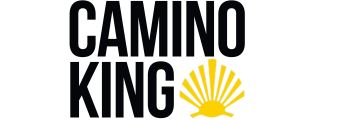
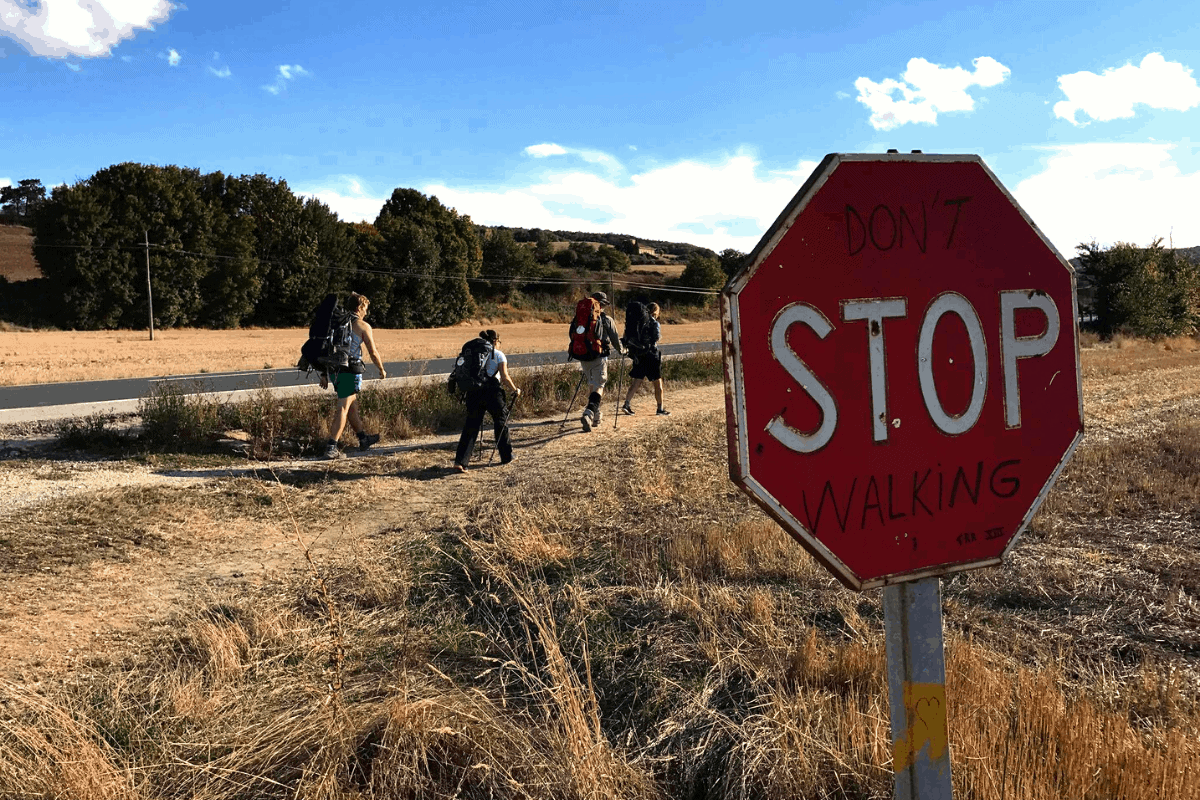

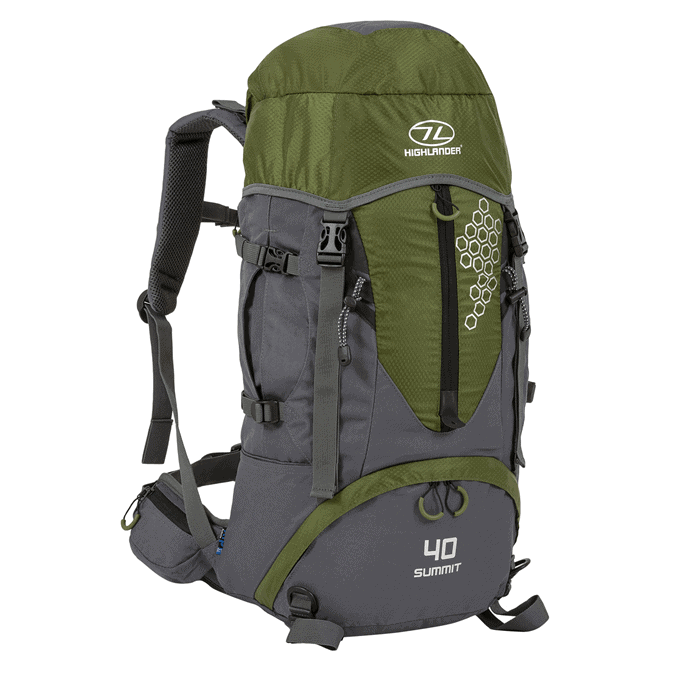
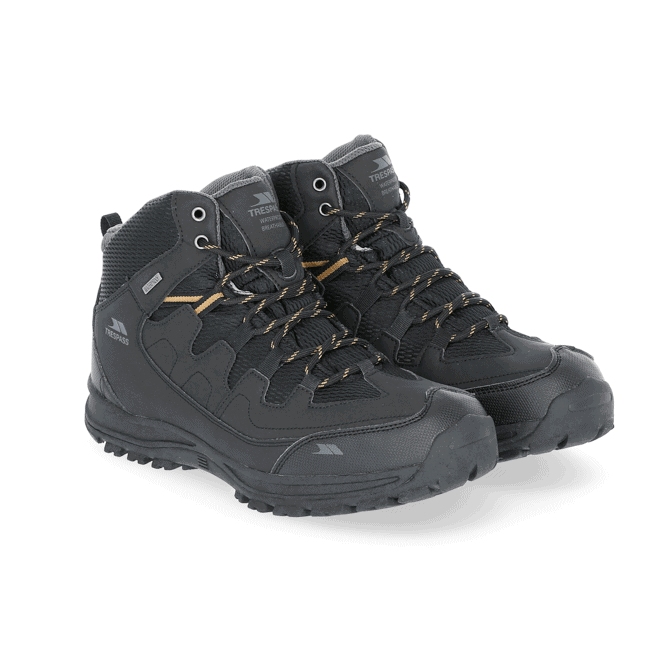
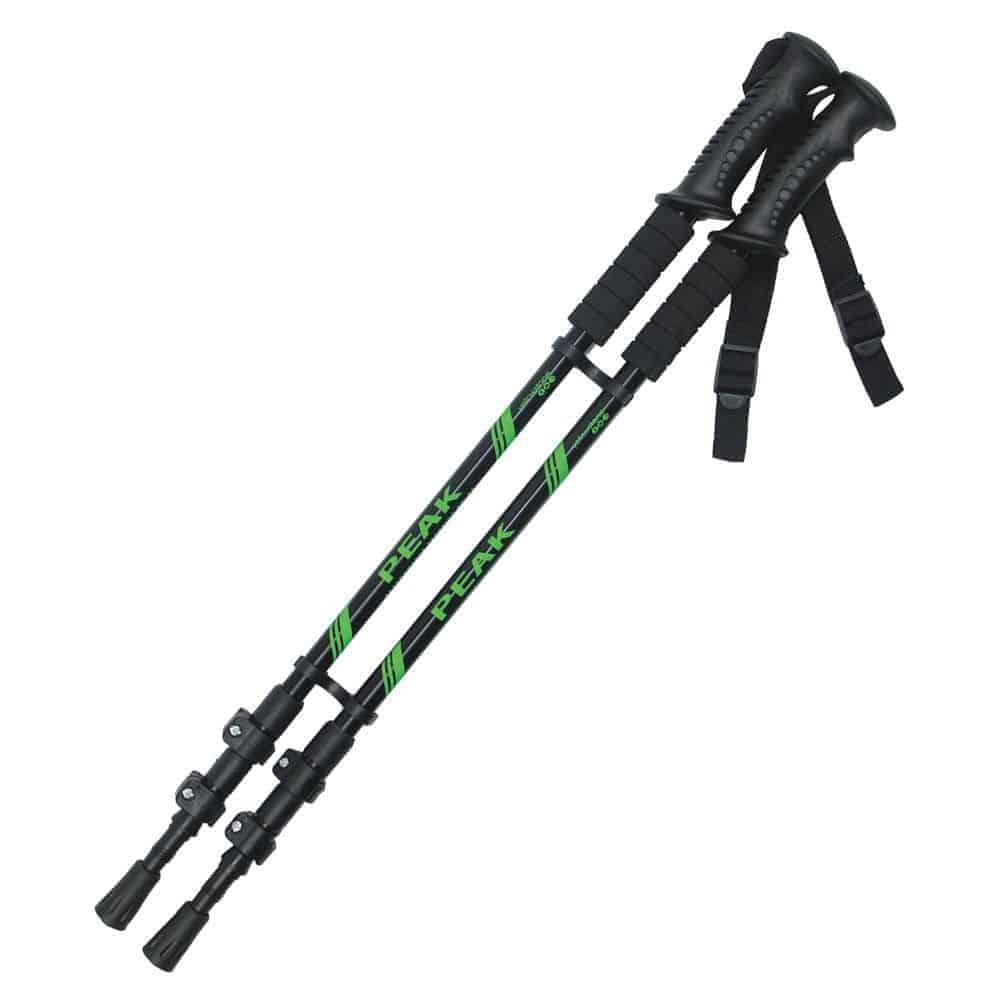
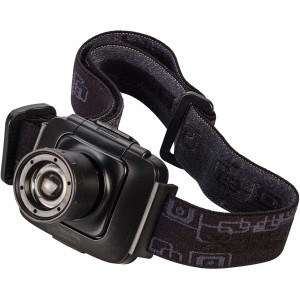

Hi
Thanks for a very informative site, it has given us answers to a lot.
Going to walk a camino for the first time this summer with my teenage daughter.
Our main concern is accommodation. We travel a lot on a budget, so the question is: how do you find the cheapest accommodation? It seems difficult to find the cheap hostels people talk about.
Or is it possible to spend the night in a tent in nature?
Regards, Heidi
Hi Heidi,
Thanks for the comment too 😊🙏
If you are going from Saint Jean Pied de Port, you can easily find a Pilgrim office (It is located here: 39 Rue de la Citadelle, 64220 Saint-Jean-Pied-de-Port, France)
Here you can both buy a pilgrim's pass, which gives access to hostels, and they also provide an overview of all official pilgrim accommodation options and prices. I think it only costs €2 for both the passport and the overview.
It is a very clear leaflet that tells how far it is to all the Herbergs (hostels) and what they cost.
When we went there in 2016, it cost between €5 and €10 for most nights. When we passed it in 2022, everyone had increased by around €2-3
There are rarely good opportunities to set up a tent, as the route is very much designed so that you spend the night relatively cheaply in hostels, which I would also recommend to you. However, we have tried to set up a hammock on the route, there are also some acquaintances who have brought a tent with them. However, this is both a heavy idea if you have to go far.
You can also read a bit about what food costs on the Camino here: https://caminoking.dk/hvad-koster-mad-paa-caminoen/
Hope my answer could help. Please let me know if there is anything else
Wishing you a very good trip 👣 Buen Camino